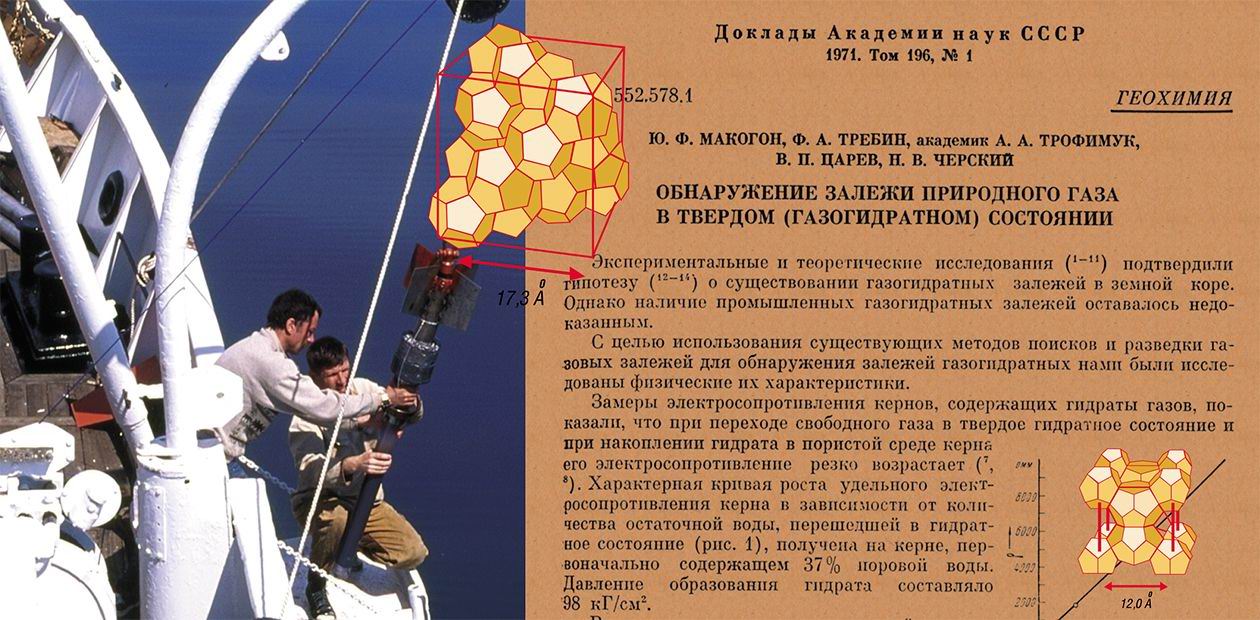Fossil Fuel of the Future
Gas hydrates are ice-like mixtures of gases and water, in which gas molecules are trapped within the framework of water molecules. Each volume of hydrate may contain as much as 150—180 volumes of gas.
The total amount of methane that occurs in hydrated form is estimated to exceed 1019g of methane carbon, which is more than the total amount of all other known sources of organic carbon in the Earth. For this reason, gas hydrates are seriously considered as an alternative energy resource for the future.
In nature, gas hydrates are formed at high pressures and low temperatures in permafrost regions and in marine environments, and consist mostly of hydrates of hydrocarbon gases (especially methane).
The total amount of methane that occurs in hydrated form is estimated to exceed 1019g of methane carbon, which is more than the total amount of all other known sources of organic carbon in the Earth. For this reason, gas hydrates are seriously considered as an alternative energy resource for the future.
1970. The discovery of gas hydrates was listed in the State Register of Scientific Discoveries
Gas hydrates, the possible future fossil fuel, were discovered by Siberian geologists led by academician Andrey A. Trofimuk. The hypothesis that the Earth’s crust may store accumulations of hydrated gas was proved valid in the late 1970s. About thirty economic deposits of gas hydrates were found in West Siberia, Yakutia, and elsewhere through checking electrical log data from gas wells against the measured resistivity of gas hydrate-bearing drill cores.
Today the technology for gas hydrate production and use remains to be developed, and this is a challenge of energy strategy for the coming years.














